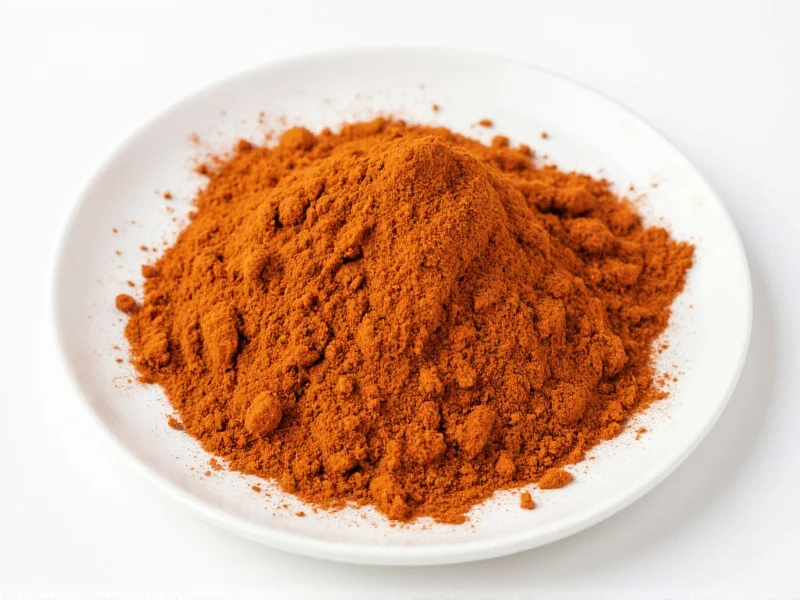When you're preparing authentic Louisiana gumbo and realize you've run out of file powder, don't panic. This essential thickener and flavor enhancer has several practical alternatives that maintain your dish's integrity. Understanding what makes file powder special—its earthy aroma, distinctive flavor, and thickening properties—helps you choose the right substitute for your specific gumbo recipe.
What Is File Powder and Why It Matters in Gumbo
File powder, made from dried and ground sassafras leaves, serves dual purposes in traditional Creole and Cajun cooking. It thickens gumbo to that signature silky consistency while adding a subtle wintergreen-like flavor with hints of citrus. Unlike roux or okra, file powder is always added after cooking—never during boiling—to prevent stringiness. This finishing touch represents generations of Louisiana culinary tradition.
Top 5 Substitutes for Gumbo File Powder
1. Ground Sassafras Leaves (The Authentic Option)
If you're seeking the closest match to commercial file powder, grinding your own dried sassafras leaves is ideal. Harvest young leaves in spring, dry them completely, then pulverize in a spice grinder. This homemade file powder substitute delivers identical flavor but requires proper leaf identification—never use sassafras roots due to safrole content concerns.
2. Okra (The Traditional Thickener)
Used in Creole gumbos for centuries before file powder became popular, fresh or frozen okra provides excellent viscosity. Slice 1 cup of okra into 1/4-inch pieces and sauté until sliminess disappears (about 8 minutes) before adding to your gumbo. For okra vs file powder for gumbo comparisons, note that okra contributes vegetal notes while file offers earthiness. Canned or pickled okra works in a pinch but adds vinegar flavor.
3. Cornstarch or Arrowroot (The Neutral Thickeners)
For clear, glossy thickness without flavor alteration, create a slurry with 1 tablespoon cornstarch or arrowroot mixed with 2 tablespoons cold water. Stir into simmering gumbo during the last 10 minutes of cooking. Cornstarch substitute for file powder works well in seafood gumbos where you want to preserve delicate flavors. Arrowroot maintains clarity better but loses thickening power if boiled excessively.
4. Roux (The Flavor-Enhancing Alternative)
A dark chocolate-colored roux (equal parts fat and flour cooked 30-45 minutes) provides both thickening and deep nutty flavor. Use 1/4 cup roux per quart of gumbo as your how much roux to replace file powder baseline. Unlike file powder which is added at serving, roux forms the gumbo's foundation. This gumbo thickener alternatives method creates richer flavor but requires careful monitoring to prevent burning.
5. Other Practical Alternatives
Chopped roasted eggplant adds subtle thickness with Mediterranean flair. Psyllium husk (1/2 teaspoon per quart) works for gluten-free needs but requires precise measurement. For quick fixes, a small amount of instant mashed potato flakes (1 teaspoon per cup of gumbo) provides surprising viscosity without noticeable flavor change.
| Substitute | Texture Result | Flavor Impact | Usage Ratio | Best For |
|---|---|---|---|---|
| File Powder | Silky, viscous | Earthy, wintergreen | 1-2 tsp per quart | All gumbos (finishing) |
| Okra | Viscous, slightly stringy | Vegetal, fresh | 1 cup per quart | Seafood, chicken gumbos |
| Cornstarch | Clear, glossy | Neutral | 1 tbsp per quart | Delicate seafood gumbos |
| Dark Roux | Rich, velvety | Nutty, complex | 1/4 cup per quart | Meat-based gumbos |
| Arrowroot | Crystal clear | Neutral | 1 tbsp per quart | Cold-temperature gumbos |
How to Use Substitutes Properly in Gumbo
Timing matters as much as the substitute itself. For how to replace file powder in gumbo successfully, follow these professional techniques:
- Okra: Sauté separately until sliminess disappears before adding to gumbo base
- Cornstarch/Arrowroot: Create slurry with cold liquid first, then whisk into simmering (not boiling) gumbo
- Roux: Make before adding other ingredients; cook to proper color without burning
- Always add thickening agents off direct heat to prevent clumping or stringiness
Common Substitution Mistakes to Avoid
Many home cooks make critical errors when seeking what can I use instead of file powder. Avoid these pitfalls:
- Adding thickener while gumbo boils (causes stringiness with file or okra)
- Using too much cornstarch (creates unnatural gelatinous texture)
- Adding file powder early in cooking (destroys delicate flavor compounds)
- Substituting without adjusting liquid ratios (thickeners absorb moisture differently)
Remember that file powder's magic happens at serving time—sprinkle it directly into individual bowls rather than the whole pot. This technique preserves its aromatic qualities while allowing each diner to customize thickness. For authentic results, pair your substitute with proper gumbo fundamentals: a well-developed stock, properly cooked aromatics (the "holy trinity" of onions, celery, and bell peppers), and appropriate protein preparation.











 浙公网安备
33010002000092号
浙公网安备
33010002000092号 浙B2-20120091-4
浙B2-20120091-4